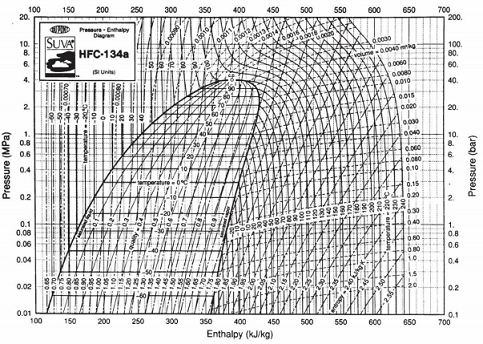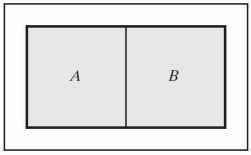Reference no: EM131238124
Applications of Thermodynamics to Chemical Engineering Exam
1) What is the difference between closed and isolated systems?
2) Is it true that thermodynamic equilibrium is reached very rapidly (a few seconds or less) in any system? Justify your answer or provide examples that support it.
3) A continuous flow of 1 kg/s of refrigerant HFC-134a at a pressure of 4 MPa and temperature of 120oC enters a valve, operating at steady-state, from which it leaves at 0.1 MPa and 40oC. What is the heat transfer rate in the valve?

4) 22.8 kg of n-octane (C8H18, molar mass=114 g/mol) and the stoichiometric amount of oxygen are fed to a closed, isothermal reactor (700 Kelvin) of constant pressure (10 bar) and variable volume that initially contains no other chemicals. The reaction stops when all n-octane is consumed (final state).
a) Find the number of moles of oxygen, carbon dioxide, and water in the final state.
b) Assume the mixture in the final state is an ideal gas. Find its volume.
5) A continuous ideal gas stream with flow rate equal to 20 moles/s at 900 K and 10 bar enters an adiabatic reversible turbine operating at steady-state, from which it exits at 2.5 bar. The molar heat capacity at constant pressure of this gas is equal to 30 J/(mol.K).
a) Starting from the general form of the mass, energy, and entropy balances, cancel out what is applicable to obtain working expressions for the situation described. Neglect changes in kinetic and potential energies.
b) Find the rate of entropy generation in the turbine.
c) Find the gas temperature after the turbine.
d) Find the power obtained in the turbine.
6) An external wall that is adiabatic, rigid, and impermeable isolates a composite system from the surroundings. An internal wall separates the two subsystems A and B that form the composite system. Subsystem A contains ideal gas "a" whose molar heat capacity at constant pressure is equal to 21 J/(mol.K). Subsystem B contains ideal gas "b" whose molar heat capacity at constant pressure is equal to 29 J/(mol.K). In the initial state, the internal wall separating two subsystems A and B is adiabatic, rigid, and impermeable, and each subsystem has volume equal to 1 m3 and pressure equal to 5 bar. The initial temperatures in subsystems A and B are equal to 300 K and 600 K, respectively.

a) Find the number of moles present in each subsystem.
b) Assuming the internal wall becomes diathermal, rigid, and impermeable, find the temperature and pressure in each subsystem at equilibrium.
c) Assuming the internal wall becomes diathermal, moveable, and impermeable, find the temperature and pressure in each subsystem at equilibrium.
Attachment:- Assignment.rar
|
When would you become aware that the solution was saturated
: Give one example each of a solid solution, a liquid solution, and a gaseous solution. When sugar is dissolved in iced tea, what is the solvent and what is the solute? When would you become aware that the solution was saturated?
|
|
How did humphrey davy discover six new elements
: Name 6 of the first 12 elements that were isolated. Are most of these metals or nonmetals? List some of the first gaseous elements discovered. How did Humphrey Davy discover six new elements?
|
|
About how many occur naturally in our environment
: About how many elements are known at present? About how many occur naturally in our environment?
|
|
Chemicals and chemical preparations
: Chemicals and Chemical Preparations - The architectural & decorative segment consists of products used in homes and buildings, such as interior and exterior paints, primers, sealers, and varnishes.
|
|
Find the rate of entropy generation in the turbine
: CHEN 623 - Applications of Thermodynamics to Chemical Engineering Exam. A continuous ideal gas stream with flow rate equal to 20 moles/s at 900 K and 10 bar enters an adiabatic reversible turbine operating at steady-state, from which it exits at 2...
|
|
What are the shapes of the three allotropes of carbon
: At first, the periodic table placed the elements in order of increasing atomic mass. What property is now used instead of atomic mass? What are the shapes of the three allotropes of carbon?
|
|
What characteristics of the elements are periodic
: Name the scientist who receives the major credit for the development of the periodic table. In what year was his work published? What characteristics of the elements are periodic? There are at least five.
|
|
What are the most common names for these compounds and ions
: What are the most common names for these compounds and ions,
|
|
Why is transportation important to supply chain management
: Why is Transportation Important to Supply Chain Management? Discuss the steps necessary to a successful relationship with a third party provider.
|